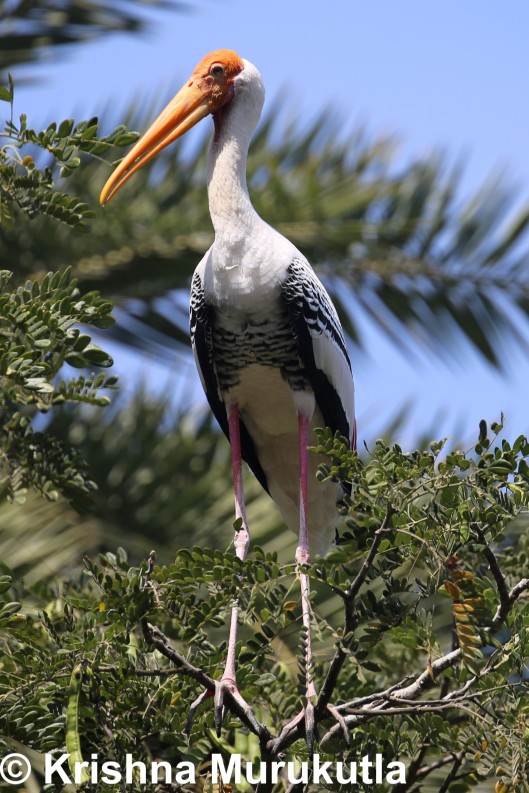Tags
Animals, fauna, Nature, Painted Stork, portraits, save_wildlife, This _is Our_world _too, wild-life.

Painted Stork
The painted stork (Mycteria leucocephala) is a large wading bird in the stork family. It is found in the wetlands of the plains of tropical Asia south of the Himalayas in the Indian Subcontinent and extending into Southeast Asia. Their distinctive pink tertial feathers give them their name. This large stork has a heavy yellow beak with a down-curved tip that gives it a resemblance to an ibis. The head of the adult is bare and orange or reddish in colour. The long tertials are tipped in bright pink and at rest they extend over the back and rump. There is a distinctive black breast band with white scaly markings. The band continues into the underwing coverts and the white tips of the black coverts give it the appearance of white stripes running across the underwing lining.
Painted storks feed in groups in shallow wetlands. The preferred depth is about 12 to 25 cm of water and deeper waters are avoided. They feed mainly on small fish which they sense by touch while slowly sweeping their half open bill from side to side while it held submerged. They walk slowly and also disturb the water with their feet to flush fish. They also take frogs and the occasional snake. They forage mainly in the day but may forage late or even at night under exceptional conditions. After they are fed they may stand still on the shore for long durations.
They breed in trees along with other water birds. The platform nests are typically placed in a tree on an island or in an otherwise undisturbed area. The best nesting sites are at the tops of the trees and birds jostle for these locations. In some areas where they have been left undisturbed they nest very close to human habitation
Painted storks being large and colourful birds, their nesting colonies become centres of tourist interest. Particularly well-known nest site are those that are close to human settlements and these include the colony in the south Indian villages of Kokrebellur and Veerapura. In Kokrebellur, the birds nest within the trees in the village forming mixed nesting colonies with the spot-billed pelican. The local people provide security to these birds during the brief nesting season when the birds arrive in October and until they leave the village after a couple of month
Source –Wikipedia

Beautiful bird
LikeLike
Thank you very much
LikeLike